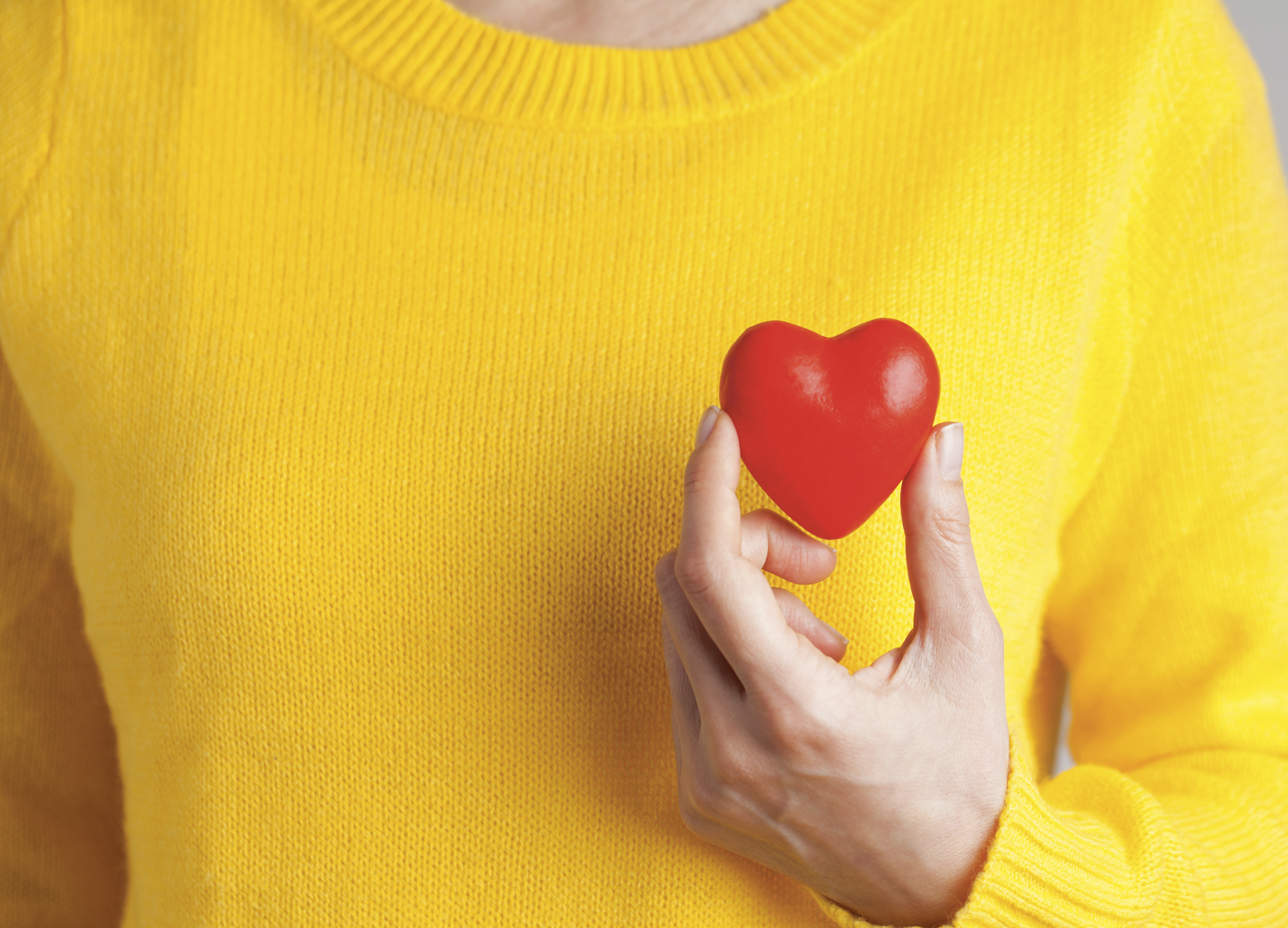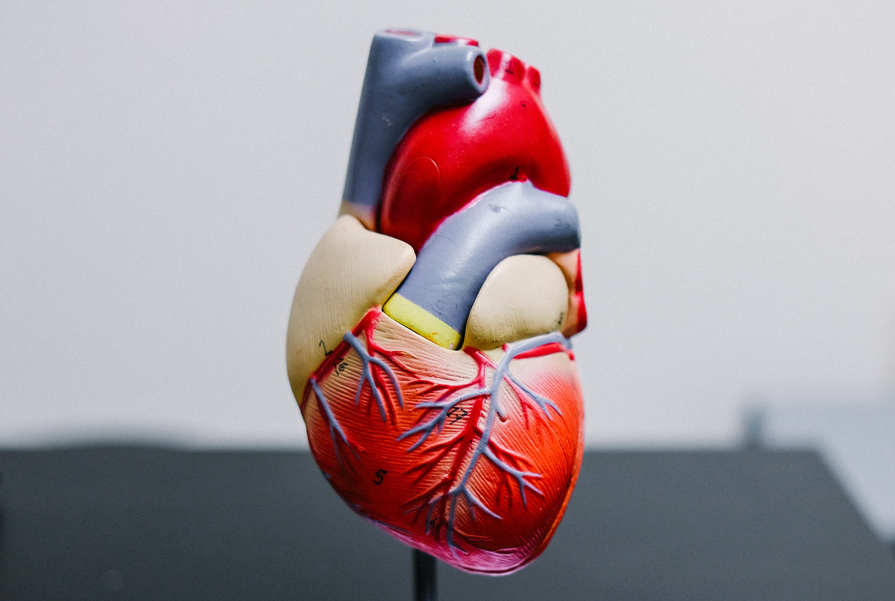Women tend to underestimate their risk for cardiovascular disease—hardly surprising, given that heart disease in women is underdiagnosed and undertreated
By Wendy Haaf
Every 20 minutes, another woman in Canada dies of cardiovascular disease. The leading cause of death in Canadian women, cardiovascular disease kills five times as many women as breast cancer. Karen Narraway and Carolyn Thomas very nearly numbered among those fatalities, but thankfully, survived to warn other women that they, too, are at risk—and that for more than half of the population, heart disease is under-diagnosed, undertreated, and underresearched.
When Narraway’s heart began racing inexplicably even when she was resting, her family physician sent her to a cardiologist. Then 52, the Toronto nurse was fit, active, and a healthy eater—and as a woman, she didn’t think she was a candidate for heart disease, even though her father had had a heart attack at an early age. The test results seemed reassuring: strong heart muscle, no irregular heartbeat.
Six months later, however, after a host of investigations into a string of other, subsequent symptoms, Narraway found out that she had six blockages in her coronary arteries, including a 95 per cent narrowing in the aorta, the main artery running down the centre of the heart. “The cardiologist said, ‘If you have a heart attack with a blockage there…well, most people don’t survive,’” Narraway says.
A Victoria distance runner for 19 years who has since hung up her track shoes, Thomas—like Narrowly—seemed to be in excellent health when, at 58, she began experiencing chest pain, nausea, sweating, and pain in her left arm. It was uncomfortable but not so severe that she couldn’t walk into the emergency room at the hospital. So when her ER doctor dismissed her symptoms as acid reflux, “I felt so embarrassed because I had just wasted everyone’s very valuable time,” Thomas recalls.
Two weeks passed, during which Thomas continued life as usual despite increasingly severe symptoms, before she returned to the same ER. That’s when a cardiologist told her that she had significant heart disease and had suffered a “widow-maker” heart attack—a type that is usually fatal.
The Risks
While Narraway and Thomas were unusually young as female heart-attack patients go, the truth is that all women see a jump in their risk for heart disease after menopause. “By the time we’re age 60, our risk factor profile is similar to men, and cardiovascular events start to increase,” explains Dr. Sonia Anand, a professor of medicine and epidemiology in the Department of Medicine at McMaster University and a senior scientist at the Population Health Research Institute in Hamilton, ON.
“Many women have three or more risk factors but don’t think they’re at risk,” says Dr. Sherryn Rambihar, a Heart and Stroke Foundation spokesperson, staff cardiologist at Mackenzie Health, and an adjunct assistant professor in the Division of Cardiology at the University of Toronto’s Department of Medicine. In one study, for instance, “only about 45 per cent of women identify heart disease as women’s leading cause of death,” says Dr. Michele Turek, an associate professor in the Division of Cardiology at the University of Ottawa and a staff cardiologist at The Ottawa Hospital and the University of Ottawa Heart Institute.
However, by seeing your doctor regularly to screen for risk factors and taking control of any that arise, and by recognizing the symptoms of a heart event early, you can substantially reduce the chances of your developing heart disease. Even if you do develop heart disease, these measures can improve the likelihood that you’ll still have years of life ahead of you.
Some risk factors (including a history of breast-cancer treatment) are far more powerful for women than for men, and women arguably get a bigger bang for the buck when they do what they can to control them.
Take smoking: “It’s the most important preventable cause of heart attack in women and the single most modifiable,” Turek says.
Another top risk factor—high blood pressure—strikes women in disproportionate numbers. “About a quarter of women will have high blood pressure,” Turek says, “and after the age of 65, women are more likely than men to be hypertensive.” Similarly, rates of obstructive sleep apnea—a treatable breathing disorder that worsens blood pressure—rise sharply in women after menopause, with an estimated eight of 10 cases going undiagnosed. (Women may dismiss the symptoms, which tend to be more subtle for them and include non-refreshing sleep, insomnia, and chronic tiredness, as a normal part of menopause.)
Diabetes, too, “is a very strong risk factor, and stronger in women,” she adds. For example, diabetes confers a risk for ischemic heart disease (heart problems caused by narrowed arteries) that’s two- to fourfold greater in women than in men.
Blood cholesterol abnormalities are linked with an increased risk for heart disease in both sexes. But it’s not just a high level of LDL (the type that causes plaque buildup in the arteries) that is of concern. A low level of HDL, “the ‘good cholesterol,’ which scavenges away the ‘bad cholesterol’ from the lining of the arteries, is a very strong risk factor for heart attack in women, especially over age 60,” Turek explains.
“If you’re prescribed medications for cholesterol, blood pressure, or diabetes, you should take them because we have excellent evidence from clinical trials that doing so lowers cardiovascular risk,” Anand says.
Obesity (particularly abdominal obesity), also a traditional risk factor, is more prevalent in women and “affects your risk for having heart disease slightly more,” Turek says. And while “higher levels of physical activity lower the risk for heart disease across all ages,” she adds, overall, fewer women than men meet the recommended 150 minutes a week. “It’s moderate exercise that’s important, not necessarily high-intensity exercise,” Turek emphasizes. And apart from any influence it might have on body weight, exercise lowers levels of inflammatory substances that play a role in heart disease. It also curbs three other risk factors that are both more frequent and hard-hitting in women than in men: psychosocial stress, depression, and anxiety.
Minimizing menopausal weight gain as much as possible, adding more physical activity to your schedule, and eating a healthy diet—such as the Mediterranean diet—all reduce the likelihood of developing heart disease. What’s more, all of these features of a healthy, active lifestyle, along with not smoking, also “lower the likelihood of developing certain cancers, such as breast cancer,” Turek observes.
Risk factors that affect men and women alike include a family history of early heart disease; South Asian and Indigenous ancestry; and autoimmune diseases, such as rheumatoid arthritis and lupus. (Note, however, that autoimmune diseases are two to 10 times more common in women.)
Some risk factors, however, are unique to women. “If you had any complications of pregnancy, such as hypertension, pre-eclampsia, and gestational diabetes, your risk of having early vascular disease is increased 10-fold,” says Colleen Norris, a professor in the Faculty of Nursing at the University of Alberta in Edmonton and the scientific director of Alberta’s Cardiovascular Health and Stroke Strategic Clinical Network. Having a baby with a low birth weight is another complication of pregnancy that boosts risk.
While not specific to biological sex, traditionally female gender roles have been tied to greater cardiovascular risk. In a study looking at subjects with a premature heart event, Norris and a co-investigator collected data on tasks that are more closely identified with women—such as housework and child care—and used this information to create a “gender index.”
“Regardless of sex, if you scored high on these gender behaviours, you were four times more likely to come back with a second heart event within the first year,” Norris says. Stress at home was one of the highest-scoring categories on the gender index, and typically, women reported the greatest stress, Norris adds.
If your family doctor hasn’t reviewed your risk factors with you and doesn’t regularly check your blood pressure or send you for cholesterol and diabetes screening, it’s up to you, unfortunately, to raise the issue and to press it if necessary. This possibility is less remote than you may think: Turek cites a study in which only about half of doctors caring for women considered cardiovascular disease a top concern for female patients.
The Symptoms
Obviously, women can develop heart disease despite scrupulous attention to risk factors and a healthy, active lifestyle—a fact that bears repeating, judging by what Norris and her colleagues discovered after speaking with women who’d been diagnosed with it. “They were embarrassed because the thinking is that you could have prevented it,” Norris says.
That’s why it’s critical that women learn to recognize symptoms of a possible heart attack—and insist on further investigation if medical professionals fail to take them seriously. “If you don’t know, then you’re not going to seek attention, which could be a really big problem because time is everything,” Rambihar stresses.
While chest pain is at the top of the list for both women and men, they tend to describe the pain differently. Women often use words such as “squeezing,” “burning,” and “pressure,” and sometimes don’t even use the word “pain” itself—all of which can, in some physicians’ minds, rule out the heart as a possible cause. Keep in mind, too, that the discomfort doesn’t have to knock you flat. “It’s not always the ‘elephant on your chest’ variety,” says Norris.
Still, not all women who have a heart attack will have chest symptoms. New pain that suddenly appears in the neck, jaw, or shoulder; and sweatiness, shortness of breath, nausea, vomiting, and a sense of doom or severe anxiety—alone or in combination—can also signal a heart attack. Here, too, the symptoms can be subtle. One of Rambihar’s patients, for example—an active woman who had written off her arm pain as tennis elbow—was shocked to learn that she needed a stent to restore blood flow in a narrowed artery.
Research has also revealed that for women, unusual, crushing fatigue may be a warning of an imminent cardiac event. “One of the main signs that female patients complained about in the month before having a heart event was incredible fatigue” similar to what women experience during early pregnancy, Norris explains. “For example, you’re making the bed and you have to sit down.”
Picking up on these clues is the first step. The next is getting to the ER right away—not putting it off until you’ve finished cooking dinner or because you’re a solo caregiver with no backup. (Such responsibilities may be one reason women “typically wait longer” to present at the hospital, Anand says. Rambihar recommends putting a plan in place ahead of time, just in case the need arises one day.) Think of it this way: What would you do if your daughter, friend, or partner were having the same symptoms? You’d probably call an ambulance even if they protested. And regarding friends and partners, you should consider taking along someone who can advocate for you if you’re unable to do so.
Once at the hospital, “women need to be assertive,” says survivor Carolyn Thomas; this is particularly true if they’re told their symptoms are due to anxiety, reflux, or some other non-cardiovascular cause. Thomas also believes it’s important that women know which tests should be done and that the results can sometimes be “normal” even if they are indeed having a heart attack.
At her initial ER visit, Thomas says, “they did the standard tests that they should do—they did a cardiac enzyme blood test, I did a treadmill test—
but all of the results came back normal.” Unfortunately, while the two blood tests for troponins—proteins rarely present in the blood in the absence of a heart attack—should be done several hours apart, Thomas was given the tests back to back. “I didn’t know any better because I’d never had a heart attack before,” she says wryly. Determined to help other women avoid such experiences, Thomas wrote A Woman’s Guide to Living With Heart Disease (Johns Hopkins University Press, 2017) and blogs at MyHeartSisters.org.
Karen Narraway, too, was misdiagnosed when she went to hospital with chest pain about six months after getting a clean bill of health from the cardiologist.
“I was given an EKG and blood work, and then told I wasn’t having a heart attack,” she says. “They told me I had anxiety.” Narraway now advises other women to “make sure they put you through the tests, and even if the stress test comes back normal, if you’re still having pain, be persistent. You know your body.”
While more work needs to be done, “the risk of dying of heart disease has decreased markedly over the last decades,” Turek says. It’s been dropping in women specifically, she adds, “on the order of five to seven per cent each year.” That’s due to leaps in risk-factor management “as well as excellent treatments people receive in hospital,” Anand says. As Rambihar puts it, “we live in the golden age of medicine, research, and science, so this is a great time to have heart disease—because you’re the beneficiary of a lot of this.”
Resources
Photo: iStock/eternalcreative.






